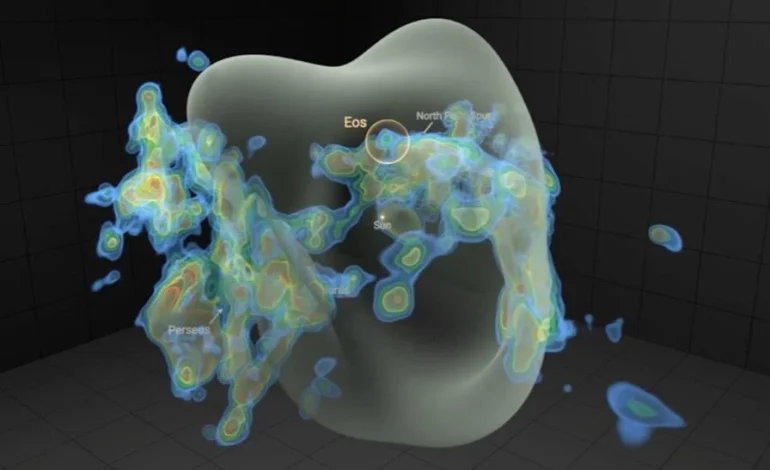Astronomers have uncovered a vast, glowing cloud of hydrogen gas just 300 light-years from our solar system—potentially the closest known molecular cloud to Earth, Gizmodo reports.
Named Eos, after the Greek goddess of dawn, the crescent-shaped formation is brimming with the raw material needed to form new stars, offering scientists a rare opportunity to observe the earliest stages of stellar birth in unprecedented detail.
The discovery, published this week in Nature Astronomy, marks the first time a molecular cloud has been identified through the far-ultraviolet glow of molecular hydrogen—two hydrogen atoms bonded together. This form of hydrogen is the most abundant molecule in the universe but is notoriously difficult to detect due to its emissions being absorbed by Earth’s atmosphere. By leveraging far-ultraviolet fluorescence, the research team was able to reveal the cloud’s presence, which had previously gone unnoticed.
“This is the first-ever molecular cloud discovered by looking for far ultraviolet emission of molecular hydrogen directly,” said lead author Blakesley Burkhart, a professor of physics and astronomy at Rutgers University. “This cloud is literally glowing in the dark.”
Eos sits on the edge of the Local Bubble, a hot, low-density region of space surrounded by a shell of gas and dust. Most known star-forming regions in our galaxy are located along this shell. Until now, scientists primarily relied on detecting dust emissions to map these molecular clouds. The new method used in Eos’ discovery could allow for the identification of more hidden structures throughout the Milky Way.
Spanning an area in the sky equivalent to 40 full Moons, Eos boasts a mass around 3,400 times that of our Sun. Its proximity and scale provide a powerful observational advantage for researchers studying how gas clouds evolve into stars and planetary systems.
“When we look through our telescopes, we catch whole solar systems in the act of forming, but we don’t know in detail how that happens,” Burkhart explained. “Our discovery of Eos is exciting because we can now directly measure how molecular clouds are forming and dissociating, and how a galaxy begins to transform interstellar gas and dust into stars and planets.”










The latest news in your social feeds
Subscribe to our social media platforms to stay tuned